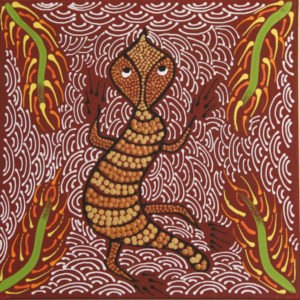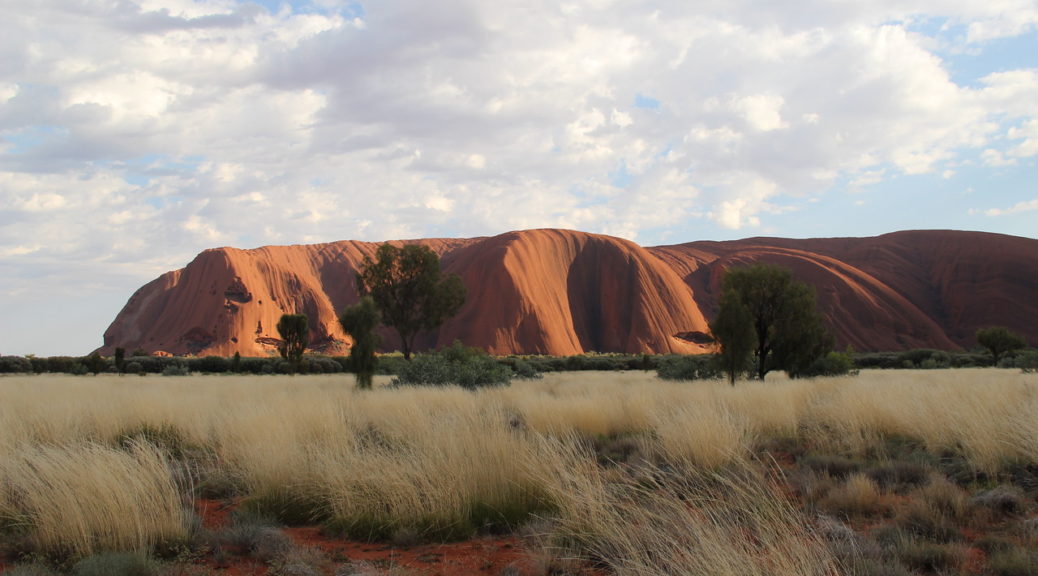
Uluru (Ayer’s Rock)
We flew to Ayer’s Rock – now called Uluru – from Melbourne. Tauck, our tour company, chartered a private jet for these flights, so our bus literally drove to where our plane was waiting – we boarded- and then we were off. We visited in early October and enjoyed moderate temperatures in the low 80’s. This area is a desert so the landscape is very different. The grasses are like cactus with “needles” serving to protect them. We were told that some of the trees are fire-resistant. Branches and leaves are several feet off the ground and the trees have two layers of bark. If the first layer burns, there is a second to protect the tree.
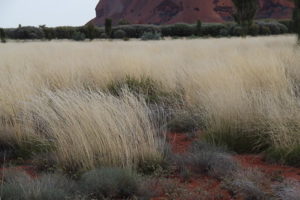
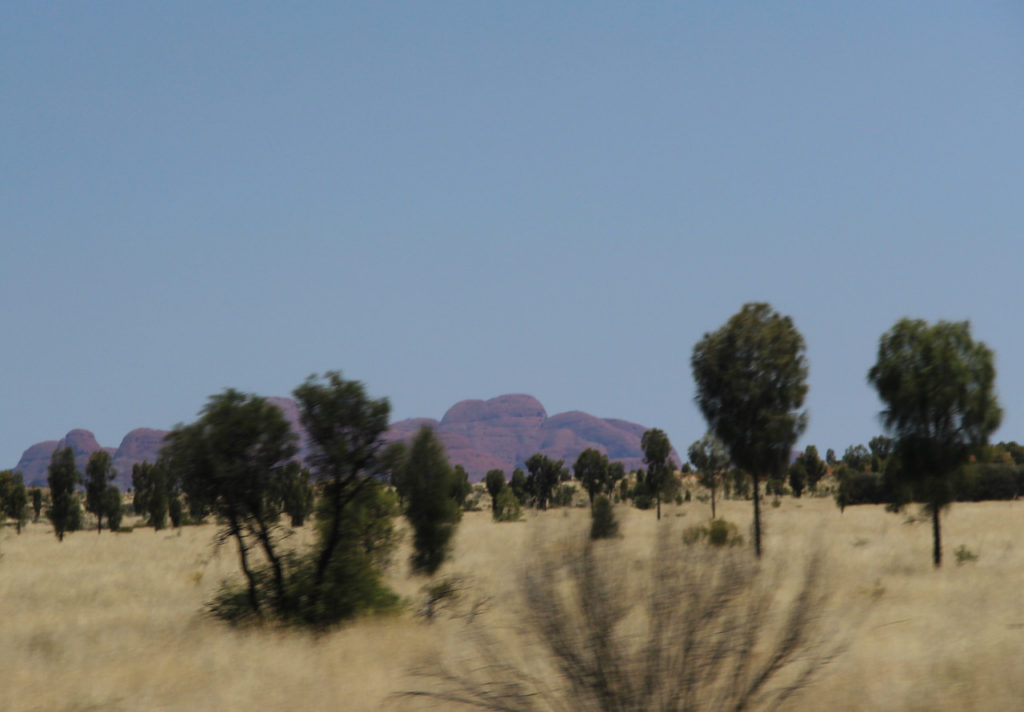
Uluru is a World Heritage Site, both because of its natural significance and its cultural significance. I will share a little about that in this blog entry, but for more detailed information I would suggest you read the materials at:
https://parksaustralia.gov.au/uluru/people-and-place.html.
I will do my best to explain my understanding of how Uluru came to be. Geologists believe that millions of years ago, there were huge mountains here. These mountains were eroding, with the sediment debris forming what are called “alluvial fans” at the mountain base. The area then became covered by sea. Pressure from sand and mud resulted in the sediment hardening into rock called arkose. Earthquake activity rotated the arkose which we know as Uluru 90 degrees, pushing it above sea level to its present position. It is estimated that 90% of Uluru lies beneath the surface of the earth. All of this happened millions of years ago and of course the area is now desert. Our guide told us that evidence of the sea can be seen in the salt flats in the area as well as the caves and indentations in Uluru.
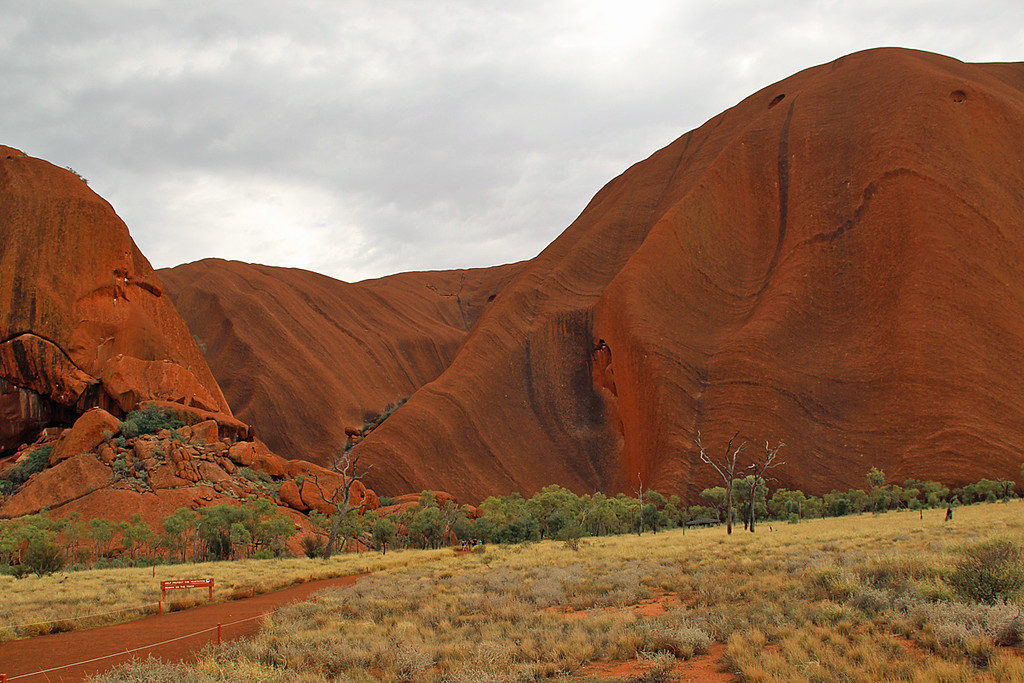
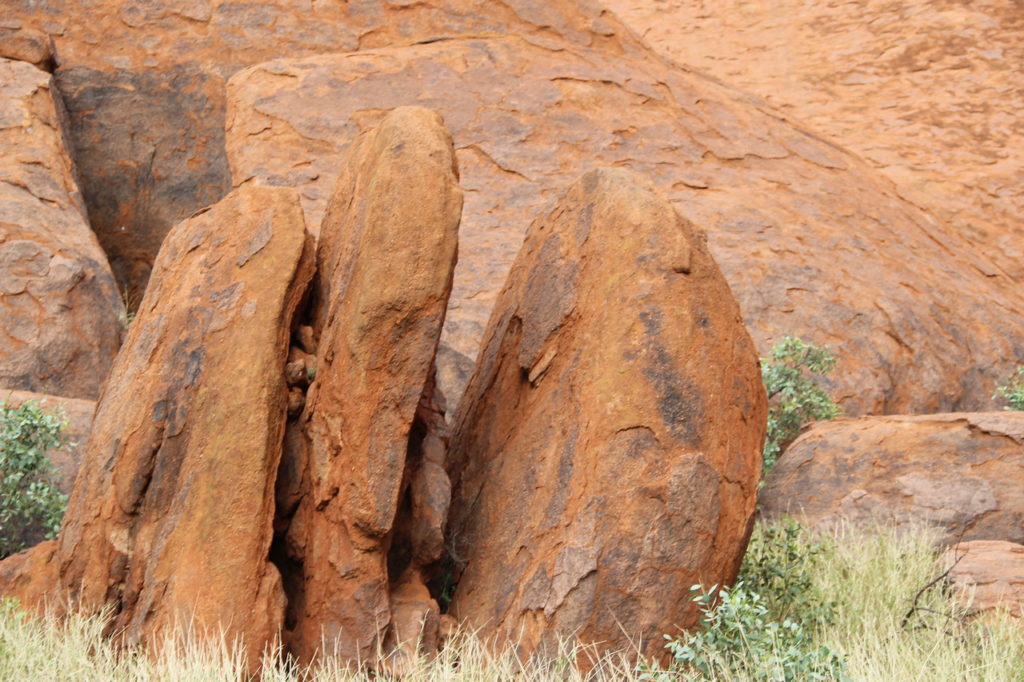
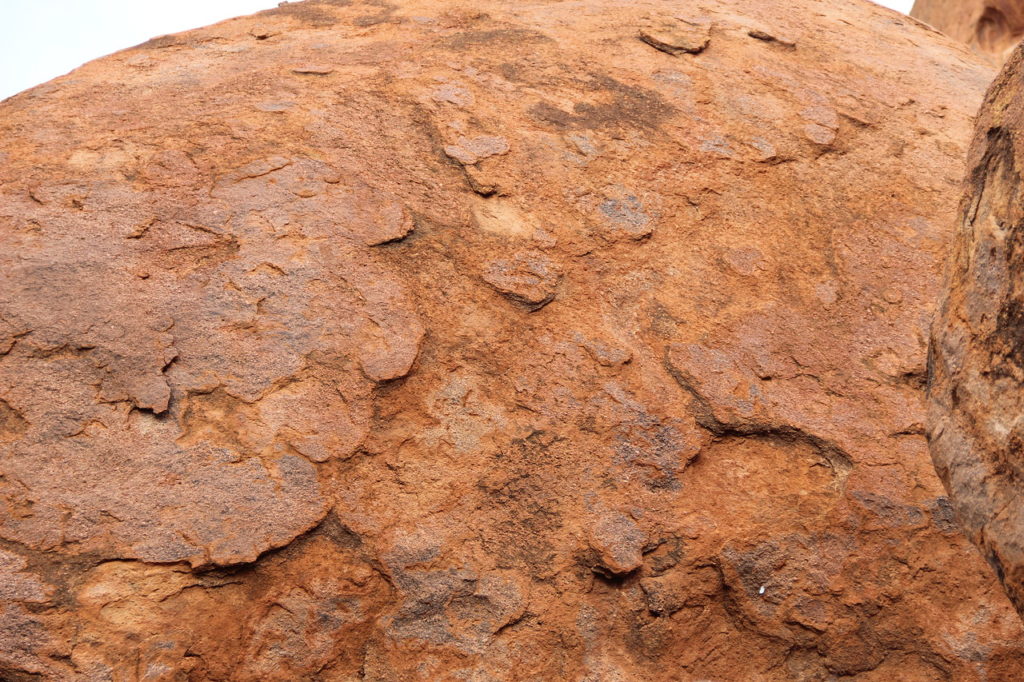
We visited Uluru near sunset so we could see the effects of the setting sun on the face of the rock. These are some of the pictures I took that evening. Uluru is just over 1,100 feet high and it would be nearly 6 miles to walk around its entire base.

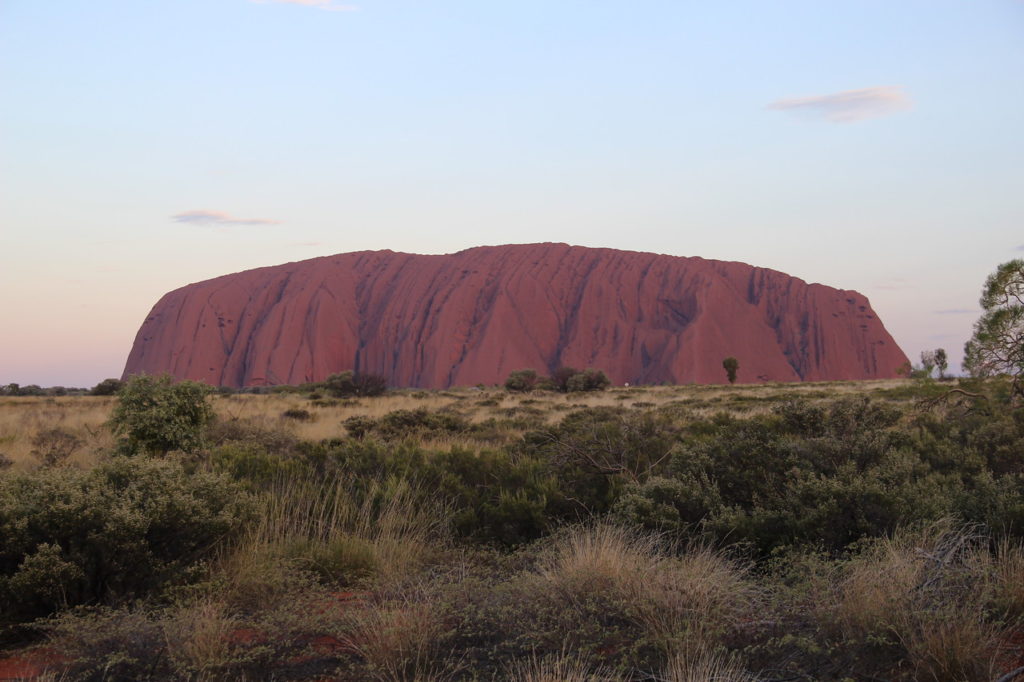

The next morning, we drove to the rock and hiked near it. It was during our hike (and some reading on-line) that I learned about Uluru’s history and its cultural importance. Uluru first belonged to the Aboriginal Australians, specifically the Anangu people. In 1873, William Gosse was the first European to see Uluru and named it Ayer’s Rock. An Aboriginal Reserve was established, however it did not include Uluru and in 1950, it became part of a national park. The Anangu people had concerns about the effects of mining and tourism and mounted a campaign to have this land returned to them. In 1983, the Aboriginal Land Rights Act was amended to return Uluru to the Aboriginal people. This is referred to as the “handback” and officially occurred in 1985. The Anangu people lease it to the Australian Parks and Wildlife Service and jointly manage the park according to traditional Aboriginal law called Tjukurpa.
As we hiked near Uluru, we saw rock paintings in a cave. Caves would have been a place where the people sought shelter. Grandmothers were very important in the culture and it was also in the caves where grandmothers likely passed down culturally-significant stories to their grandchildren. These are pictures of some of the rock paintings we saw. The first picture with the concentric circles depicts water holes. The next picture symbolizes a girl who has become a women. The third picture represents a dragon. And the last picture, with the stars, symbolizes ancestors.
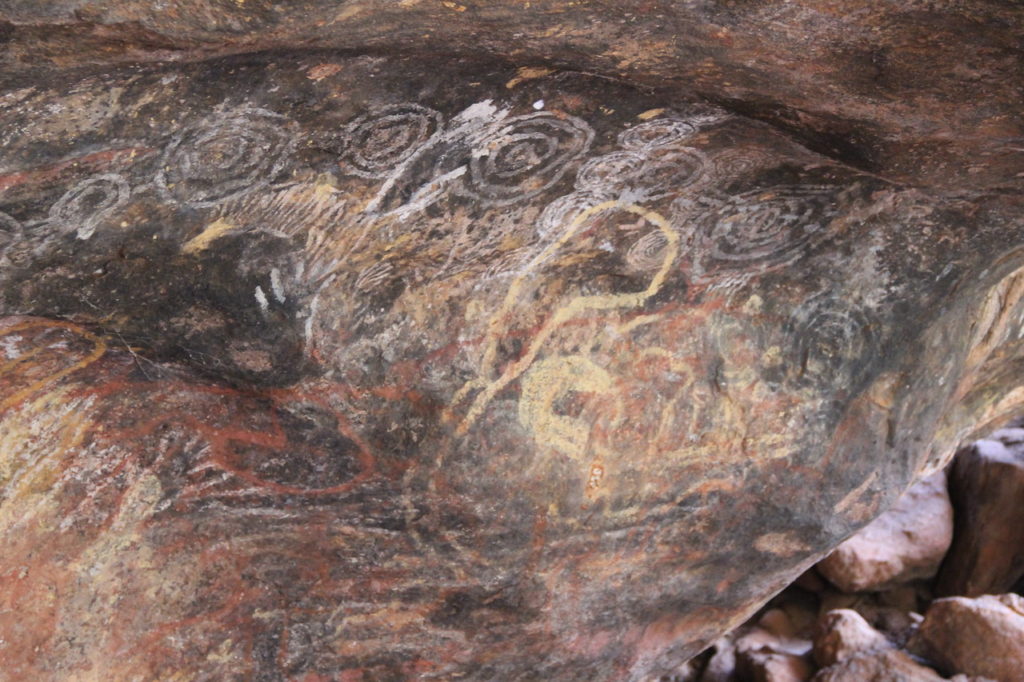


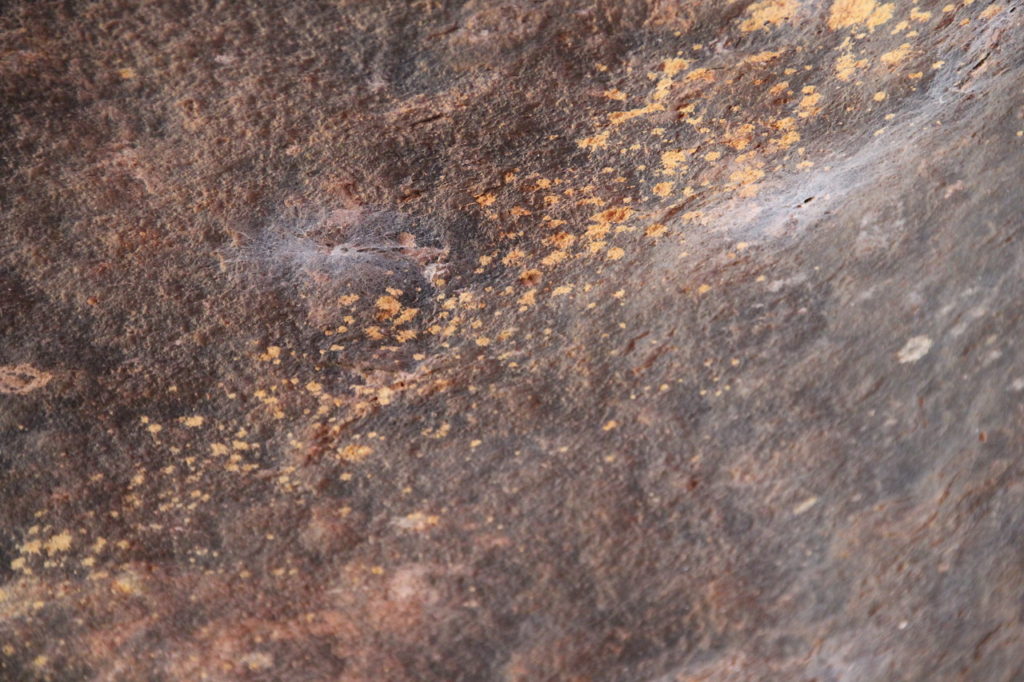
As we continued walking, we came to a water hole. While many people think Uluru is important for religious reasons, it was actually the presence of water in the desert that made it so important. Women and men often found their spouses while at the water hole. Grandmothers played an important role in this as well. They observed that children were healthier when the man and woman came from different family groups so grandmothers would choose the group into which their grandchildren could marry.
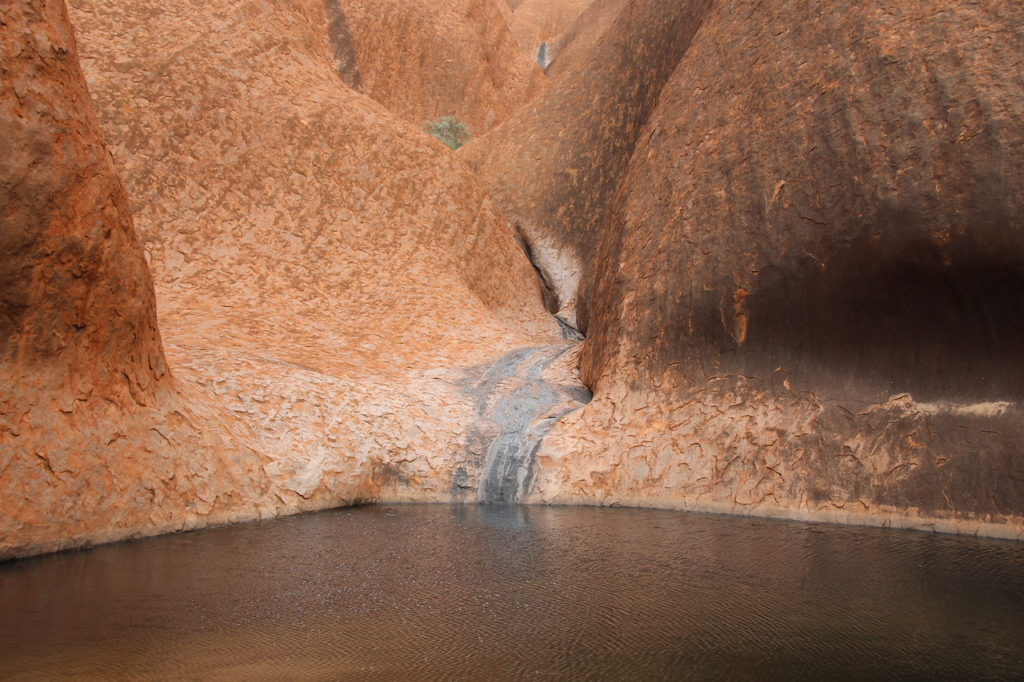
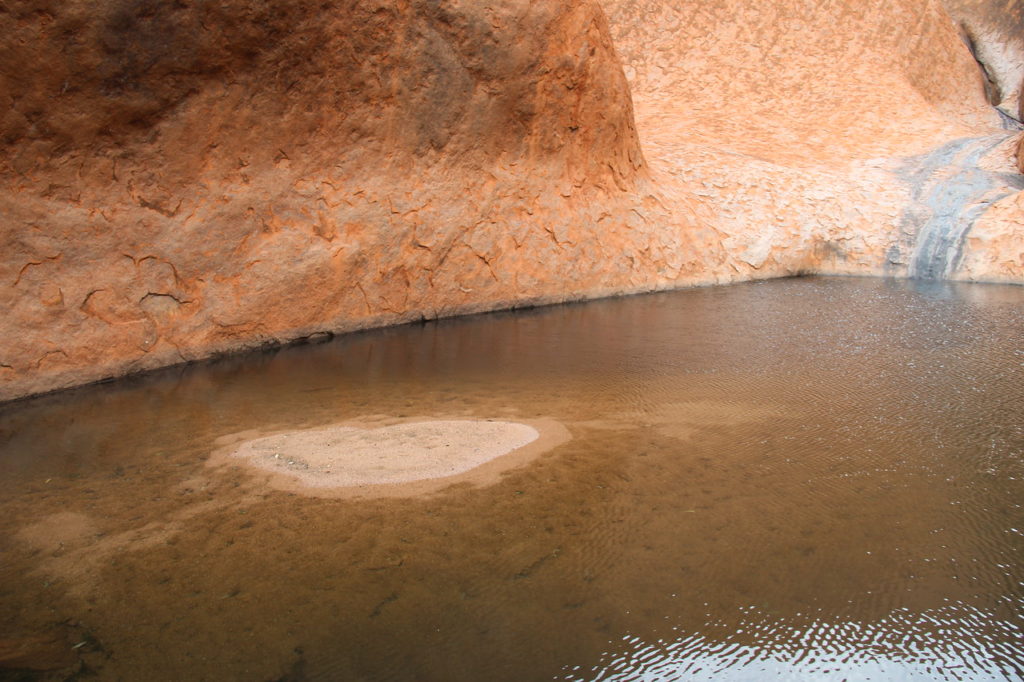
While we were at Uluru, we also visited the cultural center. In addition to several exhibits, we saw artists painting. Rather than using an easel, they sat on the floor with their canvas also resting on the floor. Aborigines used paintings to tell stories and as a way to pass knowledge and beliefs from one generation to the next. The stories and characteristics of the art can vary depending on the community in which the artist resides. Originally, the stories were painted on rock walls, in the sand or dirt, and on their bodies. More recently, the paintings have been done on canvas which also provides a source of income for the families.
I purchased the picture below which is of a blue-tongued lizard man named Lungkata. One of the stories associated with the blue-tongued lizard says he was hunting when he saw an emu which had been wounded by another hunter. He killed the emu, but knew the other hunter would come looking for the emu so he hid the meat. When the other hunter came, he said he had not seen it. Lungkata then began to take the meat to his cave. The second hunter realized Lungkata had lied and saw him climbing up Uluru to his cave. He built a fire at the base of the rock. Lungkata fell and died. What is most important about the story is not the details – for they can vary storyteller to storyteller – but the lesson the story teaches. In this story, the message is that stealing and lying are wrong. These stories, and the lessons they teach, become more complex the older the person listening to the story. While parts of the stories are told, there are other parts that are considered sacred and are reserved just for the Aboriginal families.
